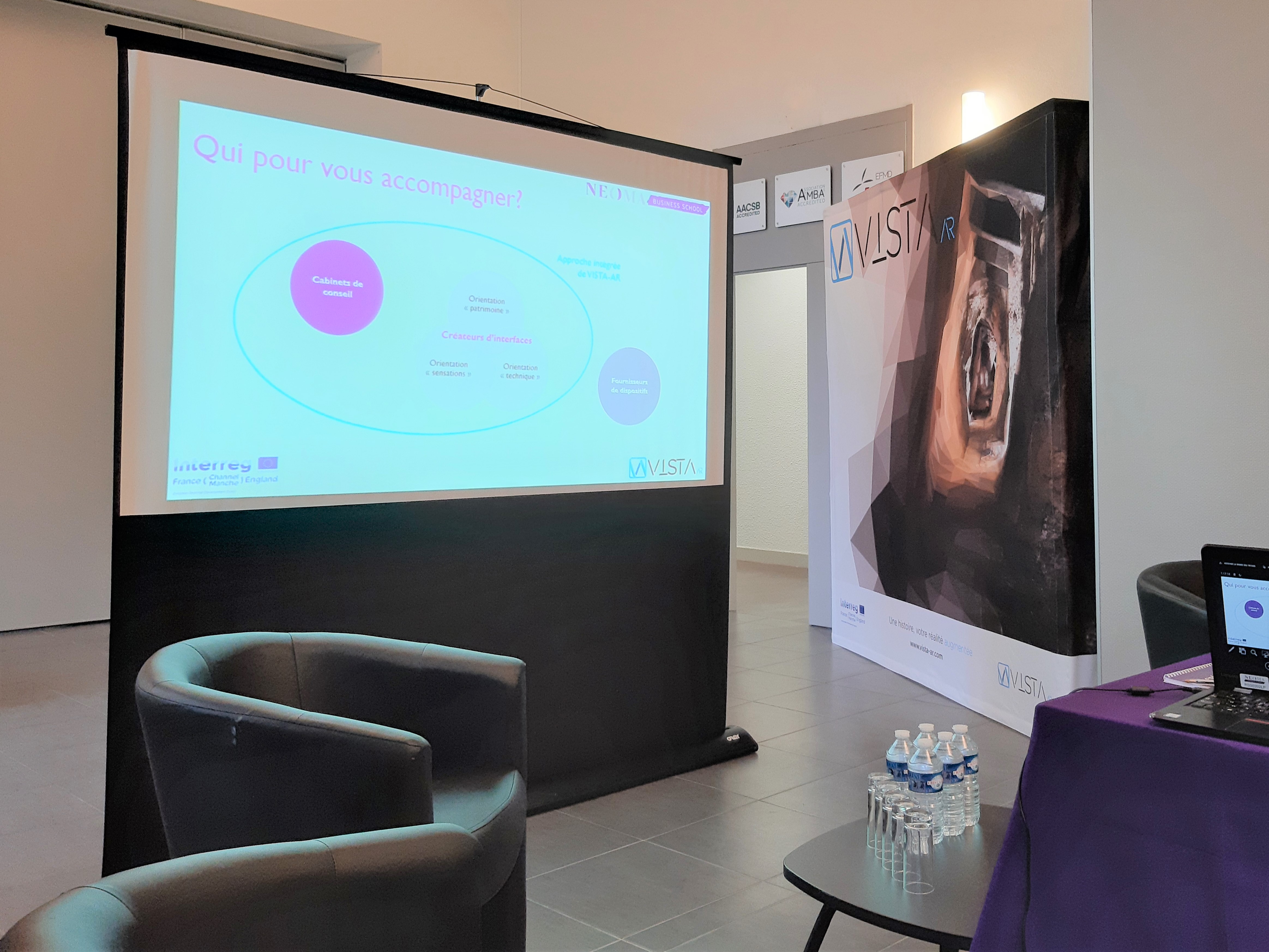Rouen 15 October 2019: The VISTA AR project confronts its research with the eco-system of tourism and heritage.

“The premise that led to the establishment of Vista AR was the following: digital devices already exist at heritage sites but these solutions are often deployed with insufficient consideration of visitor expectations” says Jean- Baptiste Suquet, Associate Professor in the Department of People and Organisations of NEOMA BS, by way of an introduction.
Therefore, Vista AR, a research project launched in 2017, aims to promote the assets of natural and cultural heritage to support innovative and sustainable economic growth. This research project specifically promotes the implementation of digital solutions for heritage sites by answering the following questions: how do we monitor the impact of digital devices on the visitor experience, analyse their impact and create value?
From the universal solution to experimentation
“Integrating a digital tool into a visit is not the key to success,” explains Elsa Gatelier, a postdoctoral researcher in Economics at NEOMA BS on the Interreg VISTA AR Project. “It’s a challenge for the sites and you have to adapt each solution, tablet, oculus or other, to their specificities.For example, in a castle like the one in Fougères (VistaAR partner ) with walls a meter thick, obtaining a wifi signal or relying on geolocation is an impossible task. Other problems are encountered at gardens or Cathedrals. ” “Even if we were hoping for a unique and universal solution, our various experiences led us to revise our approach,” says the researcher.
“Further experimenting is a key step and not finding the perfect combination the first time is the norm – you have to be ready to test and readjust.” “We work on complex equilibriums,” says Elsa Gatelier, “because each dimension can evolve and impact the others. the visitor is the barometer of their own self-evaluation and we must be able to observe their behaviour and satisfaction”.
Understanding and managing the visitor experience
The Vista AR project aims to take into account many aspects specific to the visitors’ experience by systematising the collection of information and developing analysis and monitoring tools.
“The solution currently studied by VistaAR is automatic textual analysis,” says Sylvie Jolly, an Economics researcher on the project. “Because collecting relevant visitor reviews is far from easy if you want to go beyond the ” it was good “stage, we are working on solutions that allow us to go into more detailed , to go beyond measuring overall visitor satisfaction. ”
CESI, a major partner in the project, also presented its research advances on a dual level: the understanding of the visitor journey and the development of the cloud system, tools for data collection and analysis.
Technology to better understand visitor pathways
“We seek to better understand the routes followed by visitors during their visit by analysing spatial and temporal movements,” explains Mohamed-Amin Benatia, lecturer-researcher at CESI. “For example, is a place where visitors spend a lot of time on a site the result of congestion or point of interest?” he asks. “By deploying our experimental device, which couples the interferencesof the Earth’s magnetic field with the location of the visitors’ smartphones, we have made some interesting discoveries in Exeter Cathedral, one of Vista-AR’s partners. Parts of the Cathedral that are not considered “interesting” are in fact very popular with visitors “.
“Once we have collected enough data, we hope to be able to giverecommendations for personalised pathways based on criteria such as the age of the visitor, his or her interests or the weather,” adds Mourad Messaadia, a teacher and researcher at the LINEACT laboratory at CESI.
To date the progress of Vista AR is real. There is still 2 years of work on this project and the avenues to explore are promised.
